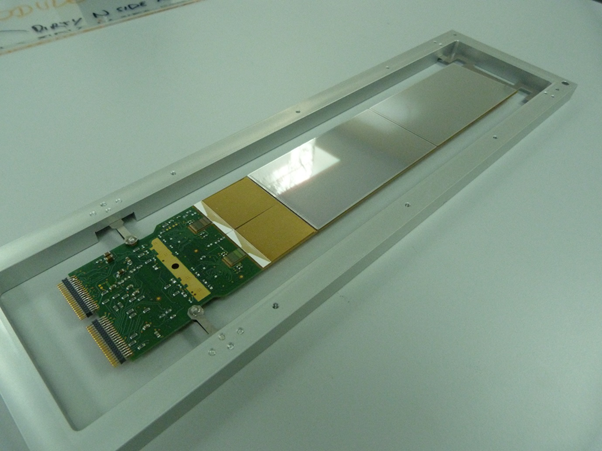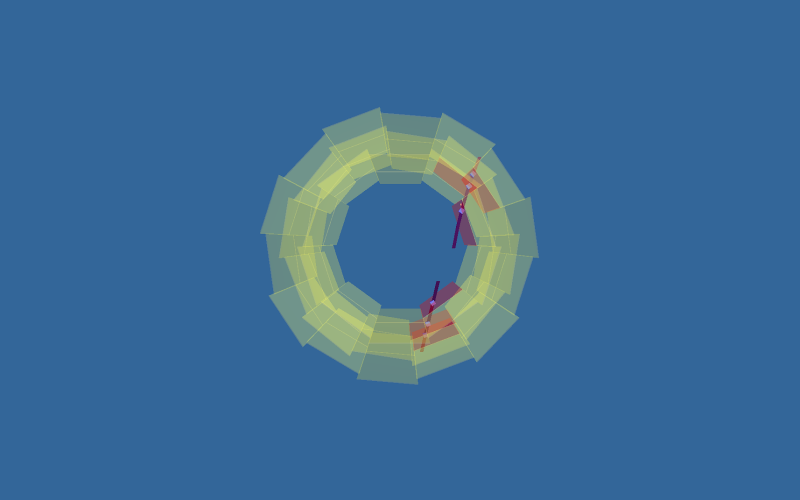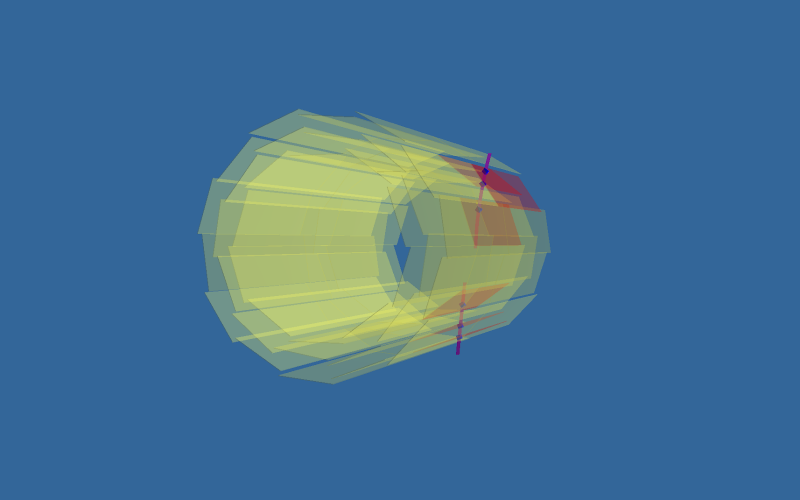The particle tracking detector that allows us to see antihydrogen annihilations inside ALPHA2.
The SVD is constructed from 72 ‘hybrid modules’ these modules contain the silicon sensor and dedicated microchips to readout the signals.
The hybrid modules segment the sensor into 256 strips on each side, effectively working like 65536 pixels. This allows us to pinpoint ‘hits’ from a particle track going through a hybrid module.
Any charged particle passing through a material will ‘nudge’ the electrons around. This effect is basically undetectable unless we can encourage those electrons to move further once given enough energy to escape the atoms they are orbiting. Applying a reverse electrical bias to a N-P (or P-N) junction allows any freed electrons (electrons given enough energy to escape their atoms orbit by the passing charged particle) to keep moving. This ‘drift’ of electrons can be accelerated with a higher voltage, ultimately creating a tiny pulse of change. This pulse can be amplified and recorded for later analysis.
The hybrid modules are arranged in three layers, annihilation products from the center of our trap fly out and through our detector. Recording ‘Hits’ in each layer allows us to reconstruct the path of the subatomic particle to a track.
We can then connect these tracks together to calculate the point of origin for the annihilation. We can use the position of this to understand the operation of our experiment, but we can also use these to count how many antiatoms were in the apparatus.
What's more?
- For more about Antimatter in general, have a look at the CERN Antimatter page
- Good descriptions of 'How ALPHA works' in detail can be found in the publication section on our website
- Particularly appropriate for students and non-physicists are Cold Antihydrogen: a new frontier in fundamental physics, Antihydrogen for precision tests in physics and Antihydrogen in a bottle
- For experts, a general overview of many of the important aspects can be found in Search for Trapped Antihydrogen






